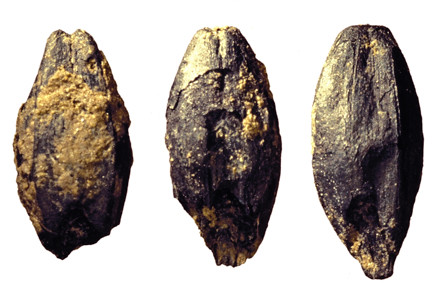
Science News last week had a fascinating tale from 2,500 years ago, about ancient Celtic breweries in present-day Germany. It was revealed in a new paper by Hans-Peter Stika, entitled Early Iron Age and Late Mediaeval malt finds from Germany—attempts at reconstruction of early Celtic brewing and the taste of Celtic beer, that early Celts built breweries “capable of turning out large quantities of a beer with a dark, smoky, slightly sour taste.”
Published earlier this month in the journal, Archaeological and Anthropological Sciences, here’s the abstract:
In this paper, we discuss specialised ditch structure from the early Iron Age settlement of Eberdingen–Hochdorf (early La Tène Period, fifth–fourth century BC), that contained large numbers of evenly germinated hulled barley grains. This malt appears to be the result of deliberate germination, given the purity of the finds and the associated unusual archaeological structure, which may have been used for germination and/or as a drying kiln for roasting the malt. The Hochdorf malt most probably was produced for the purpose of beer brewing. To learn more about the morphology of malt and the effects of carbonisation on it, experiments on modern barley grains were undertaken. Their results are compared to the ancient Hochdorf malt. Based on the excavated findings and finds as well as theoretical reflections on the early Iron Age brewing process, attempts at reconstructing the possible taste of early Celtic beer are presented. Additionally, a malt find from late mediaeval Berlin in northeast Germany is presented. A mixture of deliberately sprouted hulled barley as well as rye and oat grains, which were not germinated, was found. The three different cereals could have been used for brewing a typical mediaeval/early modern beer since the use of mixed crops for producing beer has been quite common. Because of a lack of further evidence, it remains unclear whether or not the half-timbered house in the late mediaeval town was a trading place and storehouse for malt or the brewery itself, where the malt was processed to make beer.
A large store of charred grains of barley were discovered at a site in northeast Germany, near Berlin. The barley was found in ditches, suggesting a “large malt-making enterprise.”

He then reconstructed the steps he believes the early Celts would have used to brew their beer.
- Dig a ditch, in an oblong shape.
- Soak barley in the specially constructed ditches until it sprouts.
- Grains were then dried by lighting fires at the ends of the ditches (providing dark color & a smoky taste).
- Lactic acid bacteria stimulated by slow drying of soaked grains, a well-known phenomenon, adding sourness to the brew.
- Mash up the barley to maximize the sugar content.
- Flavor it with henbane — a.k.a. stinking nightshade — which was found at the site. Henbane would also have made the beer more intoxicating. It could possibly have contained other spices such as mugwort or carrot seeds.
- Boil the ingredients with the mashed grains, towards the beginning to flavor the beer.
- Heated stones may have been placed in liquefied malt during the brewing process (though so far none have been found at the site). Otherwise, it would probably have been heated over a low fire.
- Separate out the lumpiest bits of grain.
- Fermentation then my have been triggered by using yeast-coated brewing equipment or by adding honey or fruit, both of which would have contained wild yeast.
- Let the yeast settle to the bottom.
- Cool the beer and drink.
Not all of the steps have been confirmed by the evidence yet, but the search goes on.

Isn’t the assumption made in step 4 regarding a sour character of the beer, false?
I’ve always been told that while dry malted grains (specifically the hulls) contain the bacteria Lactobacillus Delbrueckii, it needs to be innoculated in your mash or wort AFTER the mash process.
Lacto Cultures aren’t creating Lactic Acid (sourness) during the malting process unless they are introduced purposefully into the malt (AKA Acid Malt), but this doesn’t seem a process that was utilized until much later for the purpose of lowering PH values, not souring the beer.
The beer made in this time MAY HAVE been sour for many reasons, but possibly not for the reason outlined in that step.
I’m definitely not an expert, so feel free to correct me if I’m missing something. Cheers!
I have successfully made sour mash beers by allowing the surviving LAB after mash to feast once the mash temp gets down to the temp they enjoy, say 122F or so. This took about 3 days.